*This post may have affiliate links, which means I may receive commissions if you choose to purchase through links I provide (at no extra cost to you). As an Amazon Associate I earn from qualifying purchases. Please read my disclaimer for additional details..
Without a queen bee, there will probably be no hive. The buzz going around is that the queen bee lays the eggs that become the other bees, hence her importance.
But that’s not all that happens to a queen bee. The life of a queen bee is very different from the life of other bees. The following are some facts you should know about queen bees.
Table of Contents
1. How Queen Bees Are Made
Queen bees come from fertilized eggs laid by other queen bees. When a queen bee dies or leaves the hive, the worker bees feed some female larvae from the fertilized eggs with a special diet.
This diet contains royal jelly and other food substances. This specialized food is what makes these bee babies grow into queen bees instead of regular worker bees.
These larvae then develop to become pupae. After they become pupae, they are covered in beeswax by the worker bees. But it doesn’t end here.
2. The Queen Bee Competition
After about 15 days, the queen bee chews her way through the beeswax. Then after coming out of the beeswax, her first priority is to eliminate other potential queen bees.
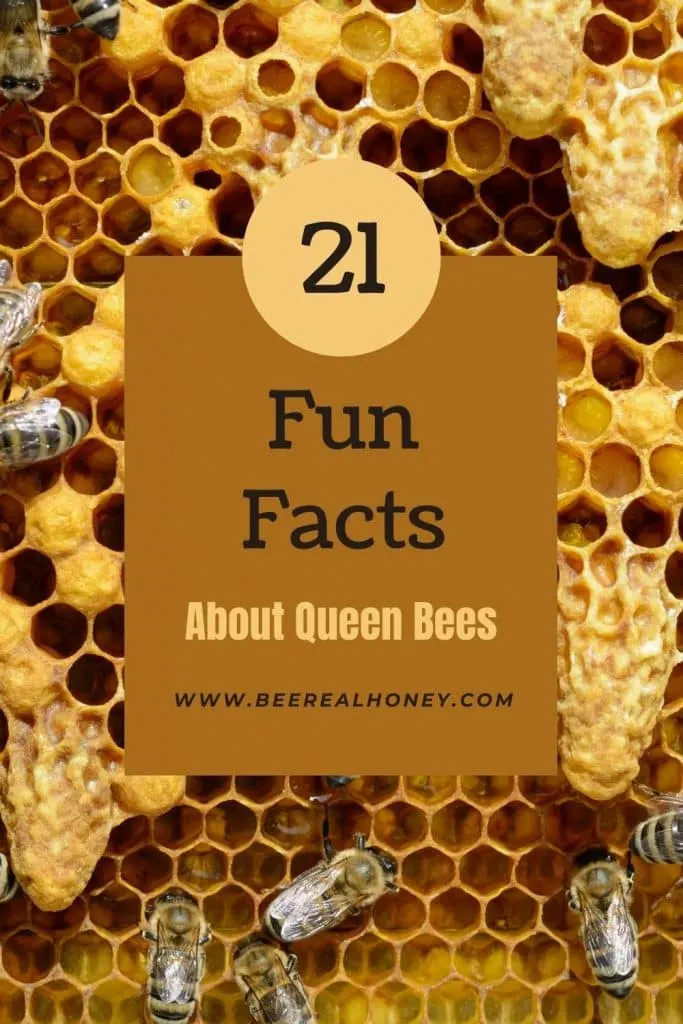
So, she opens their shell up, makes the unique queen bee battle cry then she destroys the other pupae leaving her as the only queen bee.
3. Taking the Throne
Normally, the old queen bee would be dead or would have left the hive. But in any case, if the old queen bee is still in the hive, the new queen bee battles her for the throne.
Since there can only be one queen bee in the hive, the battle is a battle to the death. The queen bees have a unique stinger that allows them to sting repeatedly. This facilitates their battle.
4. The Role of a Queen Bee
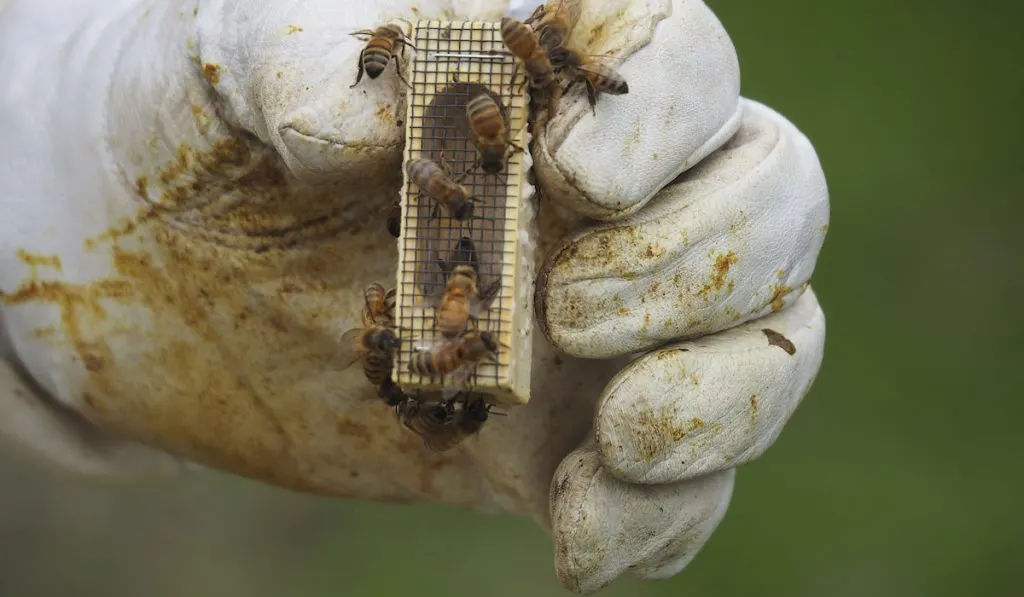
As we have already revealed, the prime role of the queen bee is to lay eggs. But that is not all the queen bee does. She also secretes and releases pheromones. These pheromones are a means for the bees to communicate with each other and the queen bee.
5. Does the Queen Bee Rule the Hive?
Although she’s called the queen, the queen bee does not rule the hive. She’s rather the mother of the other bees in the hive.
The system in the beehive is largely democratic. Some decisions are made by voting, while most functions are controlled through chemical communication and pheromones.
6. The Lifespan of a Queen Bee
Normal bees do not live too long. A worker bee can live for up to a few weeks, but a queen bee can live for about 5 – 7 years.
While queen bees can live for many years, in recent times, their lifespan has been cut short. Many queen bees only live for about 2 years now.
7. How Queen Bees Mate
Mating time is usually the one time the queen bee leaves the hive. But there are other uncommon times the queen bee leaves the hive.
The virgin queen bee will leave the hive for up to 3 days to mate with 10 – 30 drones. She gets sperm from the drones and stores them in her spermatheca.
With the stored sperm, she can fertilize the eggs she produces over a long period. But once she’s out of sperm, the hive will replace her. After mating, the queen bee goes back to the hive and will not have to mate again.
8. How Many Eggs Do Queen Bees Lay per Day
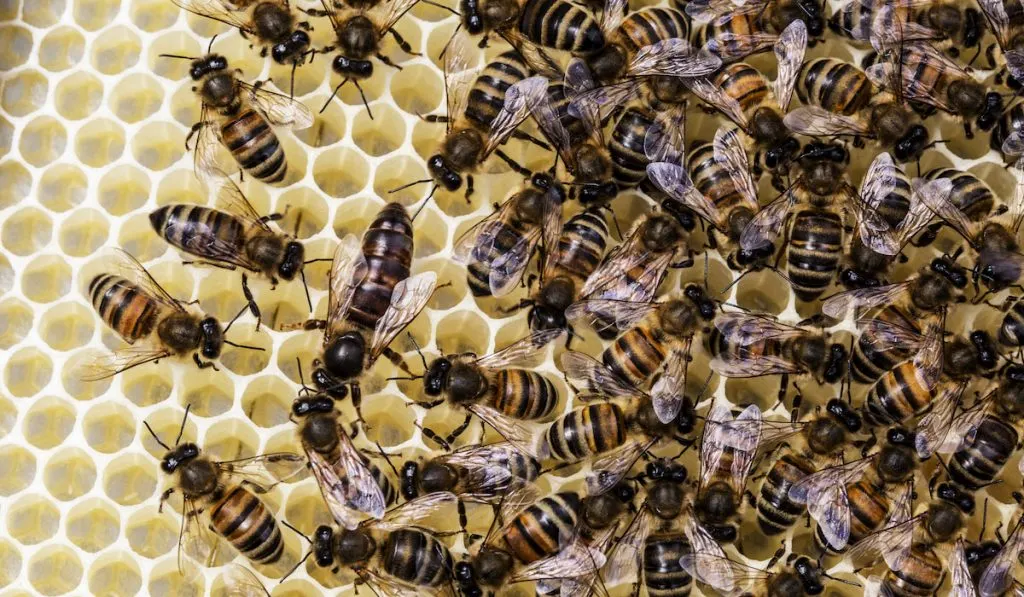
The queen bee lays 2 types of eggs: fertilized eggs and unfertilized eggs. Each egg laid by the queen bee is about 1mm in length. The unfertilized eggs become the male bees, also called drones. The fertilized eggs become the worker bees, or in special cases, the queen bee.
On average, the queen bee can lay over 2000 eggs in a day. Every day, she can lay enough eggs to surpass her body weight.
9. How Many Babies She’ll Have in Her Life
These days the average queen bee lives for 2 years, which is about 730 days. So, on average, a queen bee will have over 1 million babies in her life.
10. Can a Queen Bee Sting
Queen bees have stingers, and the short story is that they can sting. But they are not responsible for protecting the hive, so it is very unlikely that a queen bee will sting you.
So what is the stinger for? Remember we said a new queen bee might have to fight to become the sole queen bee? This is what the stinger is meant for.
11. Queen Bee Stinger
The queen bee’s stinger differs from the usual bee stingers. Normally, when bees sting, they die. Their death is a consequence of the structure of their stingers.
Worker bees have barbed stingers. So when they insert the stinger inside soft tissue, they can’t remove them easily. So, as they try to fly off with the stinger attached, the stinger detaches from their body and pulls their insides with it.
12. Queen Bee Body

Queen bees have heads, wings, thoraxes, and abdomens like other bees. But the size of these parts differs from the size of the other bees.
The abdomen of the queen bee might have a color shade different from that of other bees. Also, the wings of queen bees are smaller and do not reach the end of their abdomen, unlike other bees.
13. Queen Bee Size
When fully grown, the queen bee is the largest in the hive, around 20mm long. At this stage, they are usually about 2 times the size of a worker bee. The abdomen is longer; the thorax is slightly bigger.
If a queen bee has not started laying eggs yet, her abdomen will most likely be shorter and smaller. For this reason, virgin queen bees are relatively smaller. The specie of the queen bee is another factor that determines size.
14. Queen Bee Weight
A queen bee can weigh as much as 0.002 pounds (0.85 grams), while the worker bees usually have weights between 0.0002 – 0.0013 pounds (0.1 – 0.6 grams). Queen bees usually weigh more because of their diet and lifestyle.
But if there’s enough food, the worker bees can also weigh as much as the queen bee. Also, sometimes the queen bee and the worker bees can carry food in the abdomen, making them twice their normal size.
15. Queen Bee Diet
Queen bees eat honey, royal jelly, nectar, and pollen. But their primary food is royal jelly, a substance secreted from the mouth of worker bees. Also, they do not like honey that much and do not make honey or any other food they eat.
Queen bees do not source for their foods themselves; the worker bees get their food for them. Worker bees also pre-digest the meals and feed the queen bee. The queen bee has very little time to do any other thing, so the worker bees tend to most of her needs.
16. How High Can Queen Bees Fly
Queen bees have smaller wings and large bodies. This might cause you to wonder, how high can queen bees fly? Well, queen bees usually do not have to fly, but when they have to fly, they lose most of their weight.
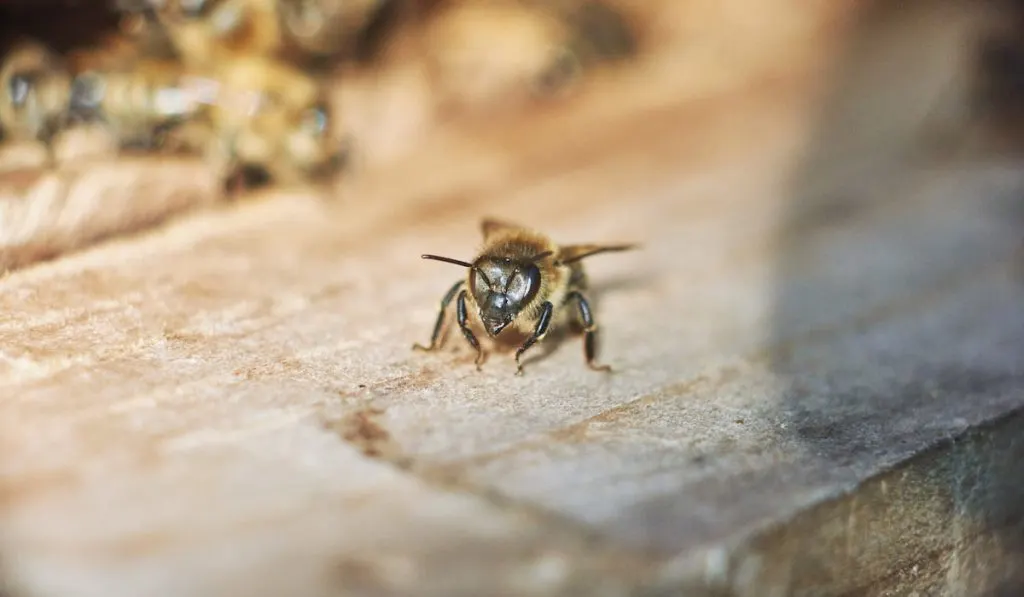
After losing weight, they can fly as high as the average bee. The average bee can fly as high as 13000 – 30000 feet.
17. Leaving the Hive
The queen bee rarely leaves the hive. But under certain conditions, she has to. One such condition is when she has to mate. This is when she leaves to mate with a drone for about 3 days.
Another condition that causes the queen to leave the hive is swarming. Swarming occurs when a colony splits into half.
During swarming, the queen bee leaves the hive with half of the colony. She then settles with them elsewhere and creates a new hive. The other half of the colony find a new queen bee and continue thriving.
Also, if a queen bee is sick or dying, she might leave the hive or be removed from the hive by the worker bees. In rare cases, if the hive becomes unsafe, the queen bee may take off alongside other members of the hive.
18. Queen Cells
The queen cell is the structure in which the developing queen bee larva grows. Since they are bigger, a queen bee necessitates a larger cell.
The bee cell is produced by the worker bees, and they produce 3 types of queen cells: swarm cells, supersedure cells, and emergency cells. Swarm cells are for replacing a queen after swarming.
Supersedure cells are created when the hive wants to replace their old queen bee. Emergency cells are formed when the queen dies suddenly.
19. How Other Bees Recognize Queen Bees
Well, you might be thinking about size, but that’s not it. Bees recognize their queen bees through their smell.
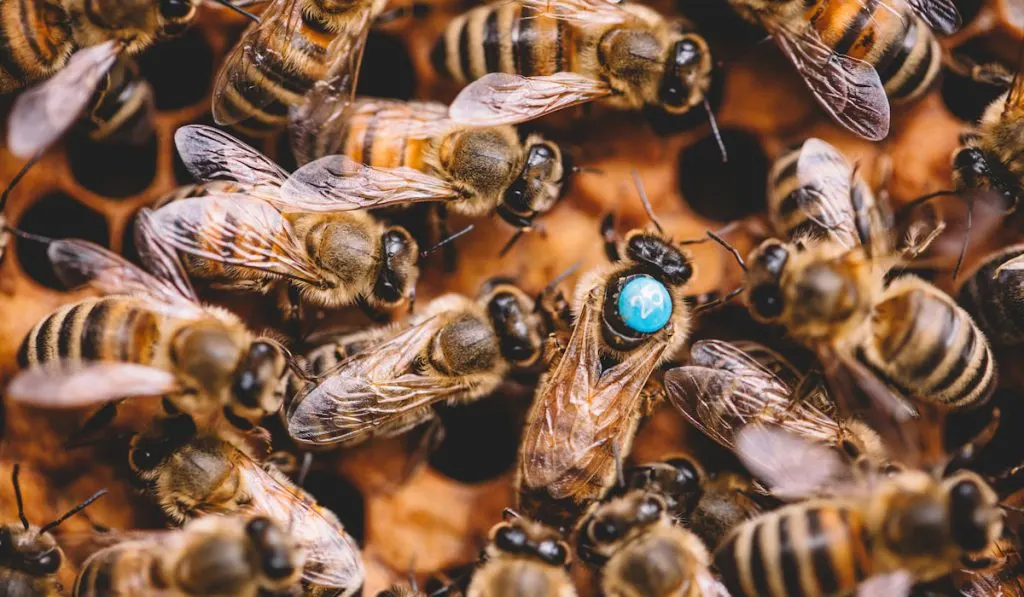
Queen bees are always emitting pheromones. This gives them a unique smell. But the older they get, the lower the pheromones they release.
20. Does the Queen Bee Make Honey?
No points for guesses because we already revealed the answer to this. Queen bees do not make honey, and they do not fancy eating honey too.
21. How a Queen Bee Dies
A queen bee may be killed in a duel with the new queen bee. She may also be killed by the worker bees when a new queen bee is available.
The process through which the worker bees kill the queen bee is called balling. The workers raise the body temperature of the queen bee by surrounding her. The queen bee overheats and dies. The queen bees may also die off on their own. Such death may be as a result of a disease or old age.
Resources
- https://www.thoughtco.com/how-long-does-a-queen-bee-live-1967993
- https://www.perfectbee.com/learn-about-bees/the-life-of-bees/role-queen-bee
- https://schoolofbees.com/how-much-does-a-beehive-weigh/#Average_Bees_Weight
- https://animals.mom.me/interesting-facts-about-the-queen-bee-4968956.html
- https://www.livescience.com/43114-bumble-bees-fly-higher-mount-everest.html
- https://bigislandbees.com/blogs/bee-blog/fascinating-facts-about-the-queen-bee
- https://backyardbeekeeping.iamcountryside.com/beekeeping-101/queen-bee-facts/
- https://carolinahoneybees.com/queen-bee-facts/
- https://carolinahoneybees.com/queen-cells/
- https://beekeepinglikeagirl.com/6-things-you-didnt-know-about-queen-bees/
- https://carolinahoneybees.com/queen-honey-bee-life-cycle-buzz-buzz/
